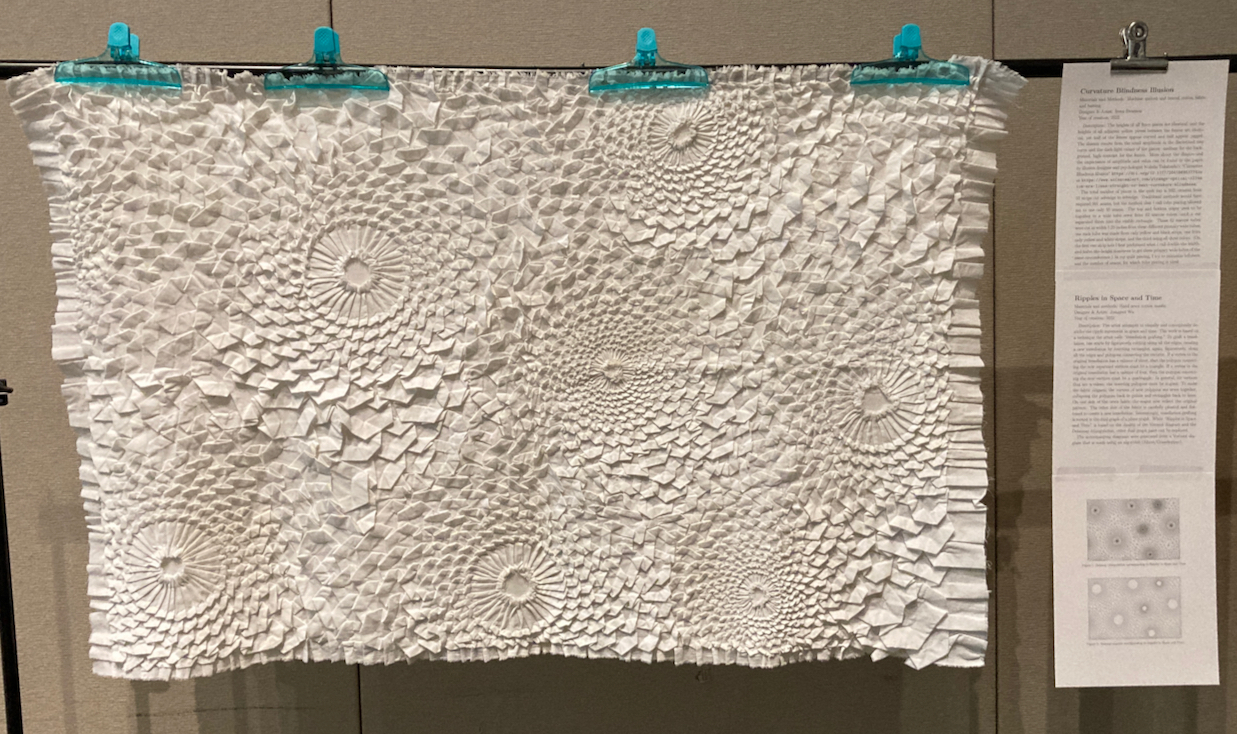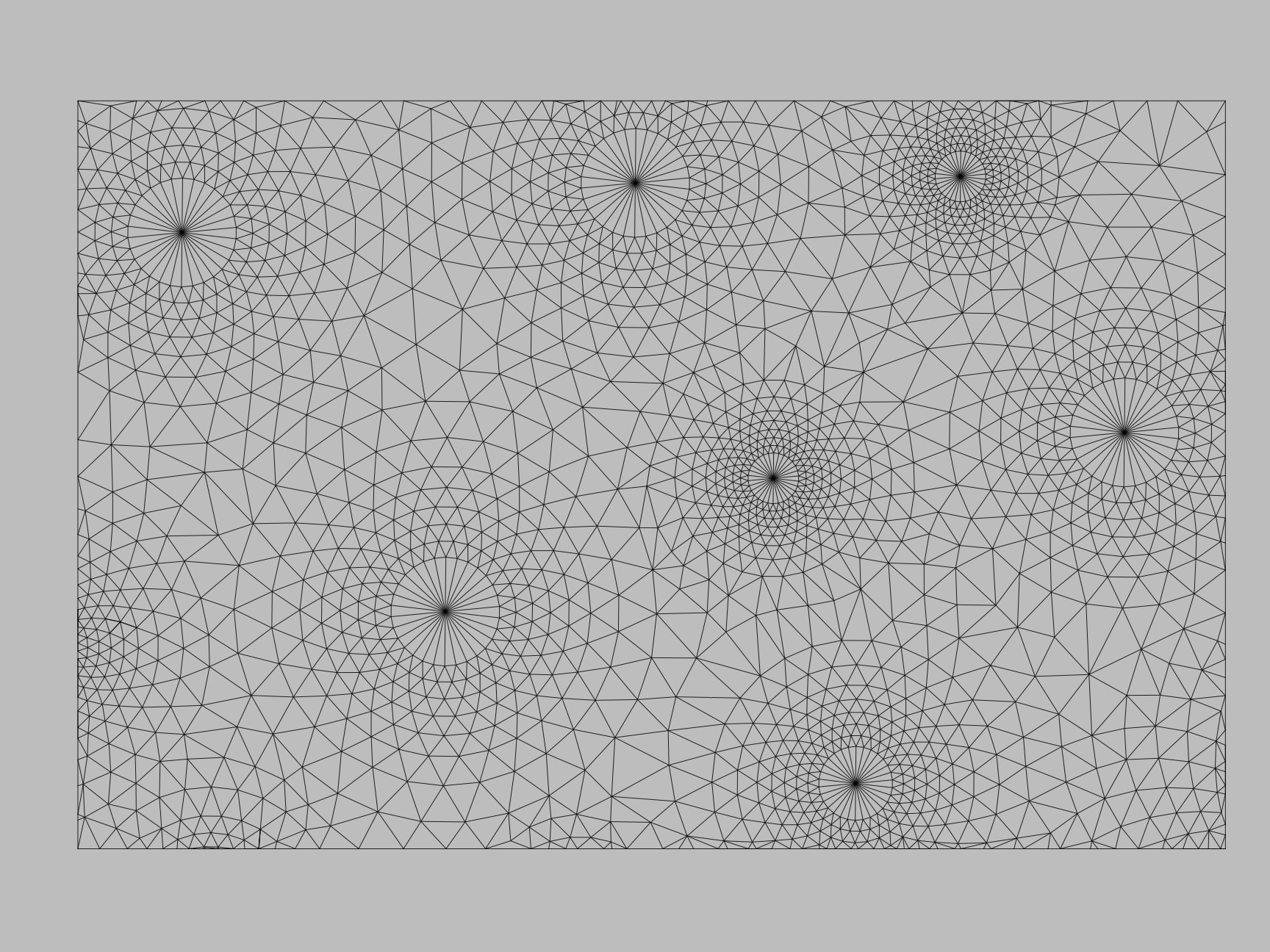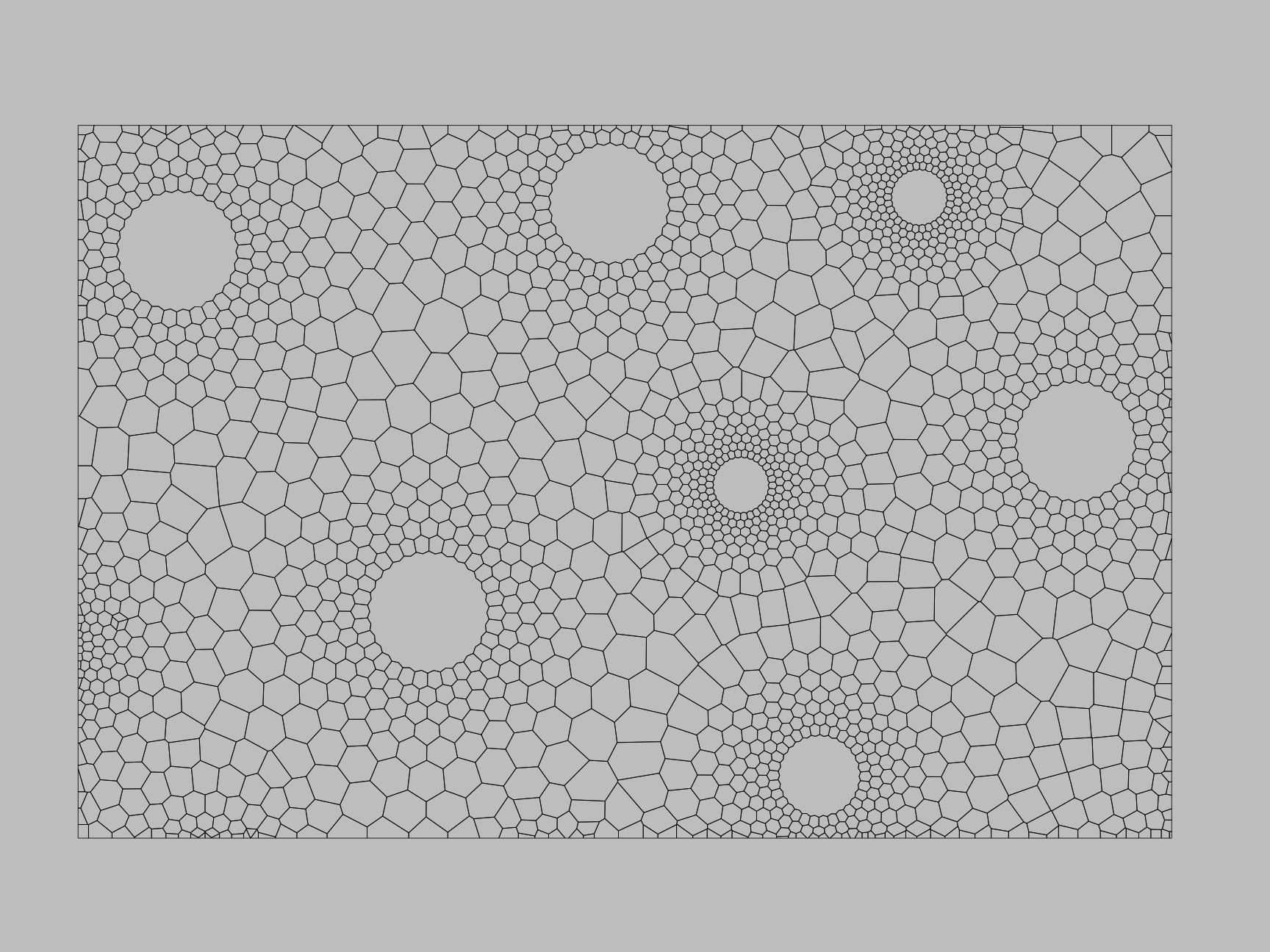Ripples in Space and Time

Designer and Artist: Jiangmei Wu
Materials and Methods: Hand sewn cotton muslin
Year of Creation: 2022
The artist attempts to visually and conceptually describe the ripple movement in space and time. The work is based on a technique the artist calls "tessellation grafting." To graft a tessellation, one starts by figuratively cutting along all the edges, creating a new tessellation by inserting rectangles, again, figuratively, along all the edges and polygons connecting the vertices. If a vertex in the original tessellation has a valence of three, then the polygon connecting the now separated vertices must be a triangle. If a vertex in the original tessellation has a valence of four, then the polygon connecting the new vertices must be a quadrangle. In general, for vertices that are n-valent, the inserting polygons must be n-gons. To make the fabric origami, the corners of new polygons are sewn together, collapsing the polygons back to points and rectangles back to lines. On one side of the sewn fabric the seams now reflect the original pattern. The other side of the fabric is carefully pleated and flattened to create a new tessellation. Interestingly, tessellation grafting is rooted in the dual graph of a plane graph. While "Ripples in Space and Time" is based on the duality of the Voronoi diagram and the Delaunay triangulation, other dual graph pairs can be explored.
The accompanying diagrams were generated from a Voronoi diagram that is made using an algorithm (Rhino/Grasshopper).

